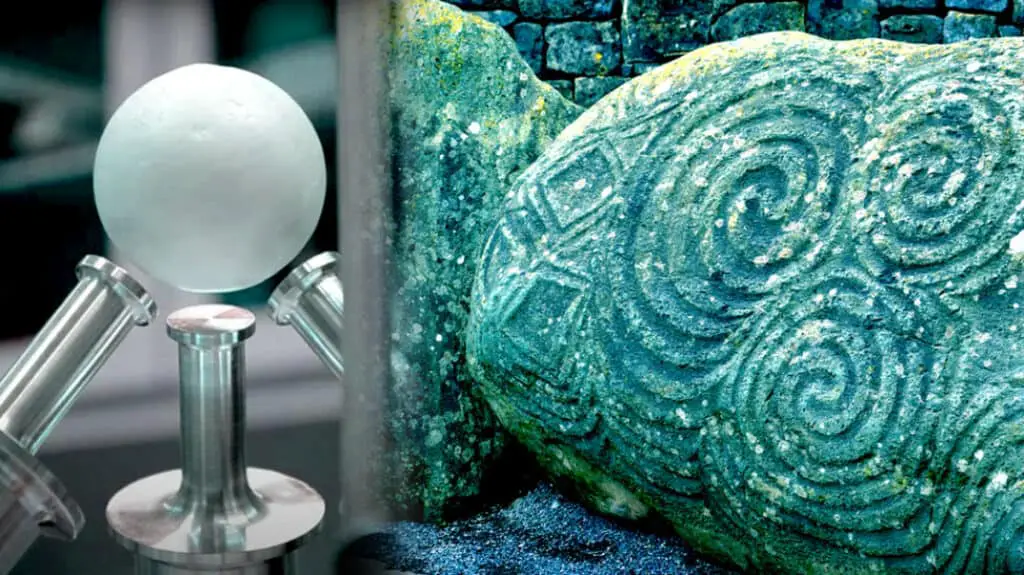
In February 2019, three researchers at Columbia University published results of an experiment showing that sound waves can carry gravitational mass. Through the experiment, they found that sound waves can generate a “tiny gravitational field.”
“The calculations show that sound waves carry a tiny negative mass, which means that in the presence of a gravitational field, such as that of the Earth, their trajectory is bent upwards. Esposito and colleagues found that sound waves also generate a small gravitational field,” the study stated.
For years, physicists believed that sound waves could carry energy but didn’t think waves could carry mass. However, the researchers found evidence that “conventional thinking was wrong,” noted Phys.org.
Quantum Field Theory and Sound Waves
Using quantum field theory, the team found that sound waves moving through superfluid helium carried a small amount of mass. Mathematically, they proved it happens though they didn’t directly measure the mass carried by a sound wave.
“More specifically, they found that phonons interacted with a gravitational field in a way that forced them to carry mass along as they moved through the material. In this new effort, the researchers report evidence that suggests the same results hold true for most materials,” reported Phys.org.
A phonon describes the behavior of sound vibrations at a very small scale.
Following the news, the researchers suggested ways to conduct further real-world testing. One possibility would be to use devices that detect gravitational fields to study earthquakes. As the quake sends sounds through the planet, the devices could detect “billions of kilograms of mass” carried by the sound.
In 2020, scientists created an algorithm to detect signals from earthquakes that deform gravity, changing the density of rock for a short time. These changes in gravity send out signals at the speed of light, making it possible to detect quakes before the destruction begins.
See how earthquakes create waves inside the planet from National Geographic:
The Sound Wave Anomaly
A year before the study, the same team introduced the theory that phonons have a negative mass and, therefore, a negative gravity.
Strangely, phonons seem to defy gravity, rising upward instead of falling down.
“It turns out that under certain conditions with sound waves, sound waves can actually start to rise, rather than fall,” says string theory co-founder, Michio Kaku. “And, this is an anomoly, but yes, it seems to be consistent with the laws of physics, that certain vibrations instead of falling down, can actually fall up.”
Sound to Levitate Stones
For Ancient Astronaut theorists, the study immediately suggested ideas of how ancient people managed to move massive stones long ago. Perhaps, they were using sound waves and vibrations to move the stones with relative ease, after all.
Ancient stories suggested sound was part of the equation, and people constructed monuments with an apparent goal of amplifying a certain frequency. For example, Newgrange in Ireland, the Pyramids in Egypt, or the underground Ħal Saflieni Hypogeum in Malta.
Just maybe, sound waves were partly how Merlin constructed Stonehenge?
Such a fanciful story would sound familiar to Abu al-Hasan Ali al-Mas’udi, the Herodotus of the Arabs. Before 947 AD, al-Mas’udi recorded lore about how the ancients created the pyramids.
First, they placed a magical papyrus underneath the edges of stones. Then, they struck the stones with a rod of metal, and the stones started to float along a path of similar metal rods ever so gently.
Sidenote: Perhaps the papyrus was related to magnetic fields and superconductivity? In the quantum levitation experiment below, a crystal sapphire wafer coated with an extremely thin ceramic layer becomes cooled. Thus, it becomes a superconductor and levitates above a magnetic field.
Today, in ancient depictions around the world, we often see god-like beings holding thin metal rods in dramatic poses.
For example, in Egypt, we see the ever-present Was-sceptre. Across the globe in South America, at the Gateway of the Sun, Viracocha, and a host of winged beings each hold rods above an enormous 10-ton gateway, seemingly to nowhere.
See the Gate of the Sun below from KuriaTV:
Moving Small Objects with Sound
By studying cymatics, harmonic frequencies, and quantum field theory, we could be getting closer to understanding how the ancients moved giant megaliths. Certainly, today’s engineers would have difficulty if they attempted to replicate many ancient sites.
Through sound experiments, one can move sand particles in precise geometric shapes. And, one can levitate small objects like Ping Pong balls.
In 2016, researchers found they could levitate 2-inch polystyrene balls with high-frequency sound waves. To do it, they constructed a tripod of ultrasound transducers.
“At the moment, we can only levitate the object at a fixed position in space,” Andrade told Phys.org. “In future work, we would like to develop new devices capable of levitating and manipulating large objects in air.”
See the experiment from ScienceAlert:
The Secrets of Sound Waves
At the time of the Ping Pong experiment, Business Insider suggested one day researchers might “generate Star Trek-style tractor beam devices.”
Perhaps, one day soon, we will discover (or rediscover) the technology to move objects with considerable weight.
In the meantime, the former director of National Intelligence, John Ratcliffe, disclosed on Fox News that the government had observed UFOs that can break the sound barrier without a sonic boom. Clearly, conventional thinking about sound waves is changing fast.
Possibly, we may unlock the secrets of sound waves within our lifetimes?
See more from Ancient Aliens on the secrets of vibrations and higher dimensions below:
Featured image: Newgrange by gosiagarkowska2 via Pixabay, Pixabay License with screenshot via YouTube/ScienceAlert


